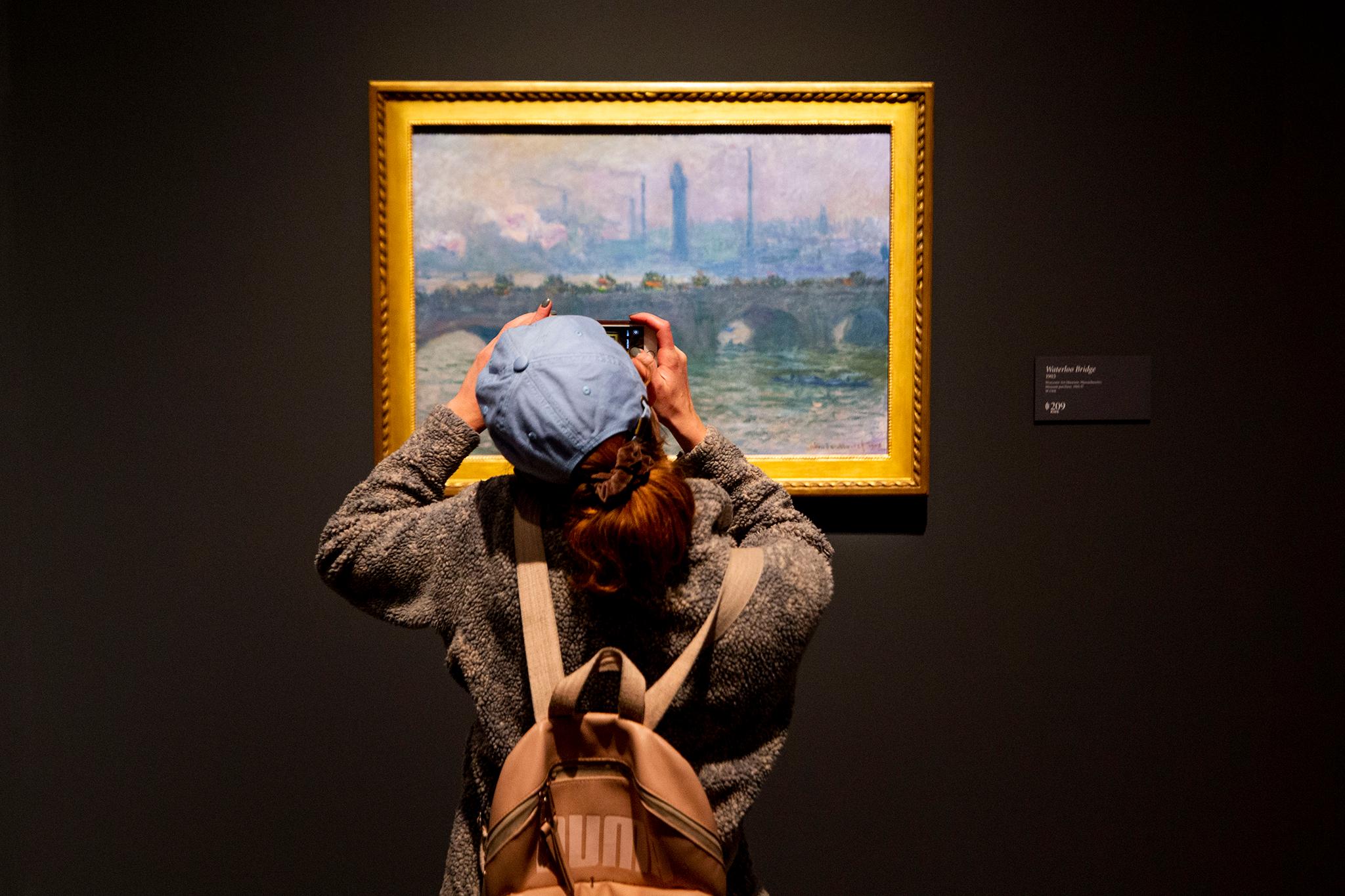
Denver’s Monet frenzy that swept the city for several months is now a thing of the past. And the nearly 120 works that made their way to the Denver Art Museum have been packed up and sent off to their next destination, which for many is the Museum Barberini outside Berlin.
Now that we live in a post-Monet Denver, here’s a list of anecdotes and fun facts on the show you can share at your next cocktail party (or if you didn’t go, pretend like you did).
A lot of you got to gaze at Monet
Hundreds of thousands of people toured the massive exhibition. According to DAM, nearly 395,000 ticketed visitors went to “Claude Monet: The Truth of Nature.”
The museum said they don’t usually disclose exhibition-specific attendance. Typically, overall attendance is reported annually and quarterly to give staff “the best sense of how many people are visiting the museum,” the statement read. But “the response to the show was so overwhelming,” they felt that sharing this number would demonstrate just how popular the show was.

You all really really liked the water lily
Of the thousand-plus Instagram posts tagged with #MonetatDAM, the final room containing a bunch of Monet's iconic water lily paintings was clearly a very popular spot to take a selfie or a back shot of you contemplating the work.
The staff is probably very tired
The Monet show sold out, even after DAM extended hours multiple times. The museum said those additional viewing hours were the approximate “equivalent of adding five weeks of exhibition time.” Some nights, the museum stayed open as late as midnight.

Monet brought the DAM newbies to the yard
About 16 percent of people who took a voluntary exit survey said they had never been to the Denver Art Museum before the Monet exhibition.
Angelica Daneo, DAM’s chief curator and curator of European art before 1900, and DAM director Christoph Heinrich said that this was a “once in a lifetime opportunity to study an outstanding painter through his whole creative life — from the first work he ever exhibited through some of the last brushstrokes he made at the end of his life.”
“We were deeply touched by the atmosphere we found in the galleries: even at times very crowded, the steady stream of visitors was curious about every detail, discussing and comparing—and blissfully focused like on a pilgrimage,” they said.

Which was bigger: Ticket sales or the value of a Monet?
While DAM declined to disclose Monet revenue from ticket and gift shop sales, a statement provided by the museum said, “Monet was one of the rare instances when revenue goals were exceeded.”
“While these exhibitions take years to develop, and incur significant costs in the process, the revenue realized during the run helps fund programs during the remainder of the year and beyond,” the statement continued.
Art business editor for ArtNet News, Tim Schneider, who has analyzed data on blockbuster exhibitions, told CPR News last fall that the problem with these big shows is that they aren’t a sustainable long-term strategy.
“You almost invariably see this huge spike in attendance, but then as soon as the museum stopped doing blockbuster exhibitions, attendance basically snaps back almost immediately to exactly what it was before you did the first blockbuster,” he said in reference to studies like this one.
These massive curatorial undertakings can create “this numbing effect for the public.” It’s very much like the Hollywood summer blockbuster. The next one has to be bigger than the last if you hope to draw the same crowds, “which is a real problem for most institutions because blockbusters are incredibly, incredibly expensive,” Schneider said.









